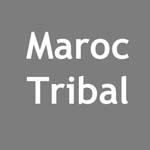Did you know that the concept of what we call a ‘runner’ rug did not really exist in the tradition of rural Berber weaving? Moroccan weavers did, however, create long and narrow rugs that reflected the huge diversity of weaving and cultural traditions of Berber and Arab tribes. These rugs were often created as long seating mats to be used against the walls of the long and rectangular Berber rooms or tents. They were regularly used on top of other carpets arranged around the walls of the room as soft and cosy seating. A long and narrow rug was also used to protect more valuable carpets in places where people walked, sat, or slept. Narrow, colourful weavings were also frequently created as mule and horse saddle covers.
Read MoreSo, how do you find an authentic Moroccan rug? The availability of genuinely old rugs is now limited and because there’s been such a great demand for these carpets, there are less available now than ever. Good pieces are hard to come by and finding them requires spending lots of time out in the remote villages, roaming around markets and auctions, and connecting with Berber families
Read MoreMoroccan Berber Capes
Moroccan have, rightly, attracted a lot of design attention in recent years. Yet beautiful subtle and natural Berber flatweaves have had less of spotlight shone on them. Among these graceful old weavings are the technically complex pure wool pieces that women wove as capes and shawls for them and their family (sometimes called handira in Arabic and tabrdouhte or tamizarht in Tamazight)
Read MoreLittle works of environmentally friendly art
Morocco is well known for beautiful and original hand-woven Berber wool rugs, with the weaving reflecting the age-old traditions and beliefs of various tribes. Since the middle of the 20th century a new type of iconic rug started to become better known when Berber women started to make a variety of carpets using cheaper recycled alternatives to wool and weaving in new non-traditional and often wildly extravagant styles. This is the Boucherouite rug, (pronounced boo-shay-REET), a word meaning in Arabic ‘a piece torn from used clothing’, or a ‘scrap’.
Read More










